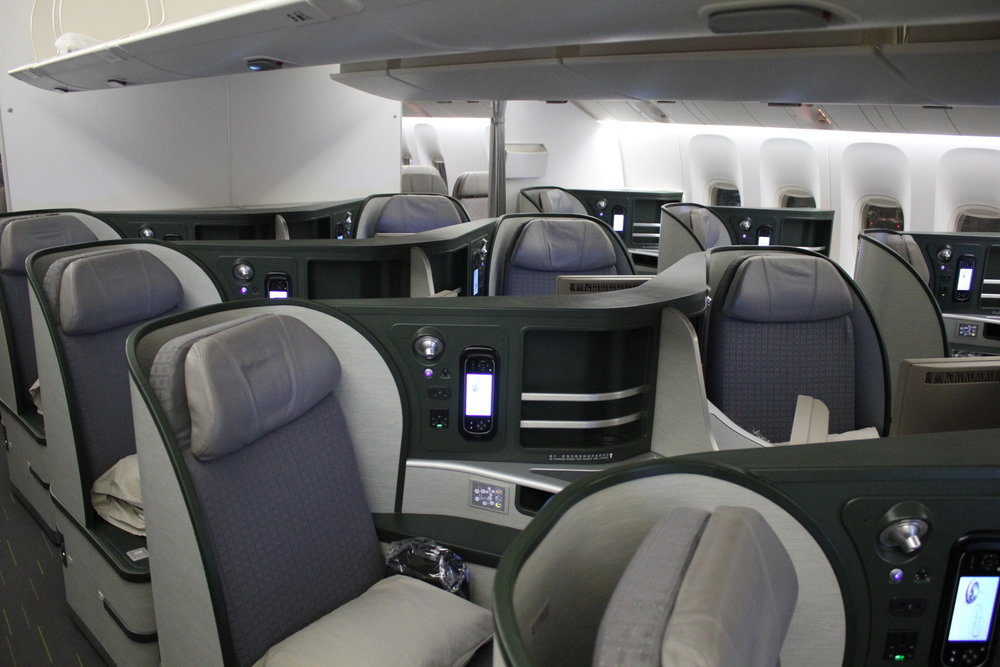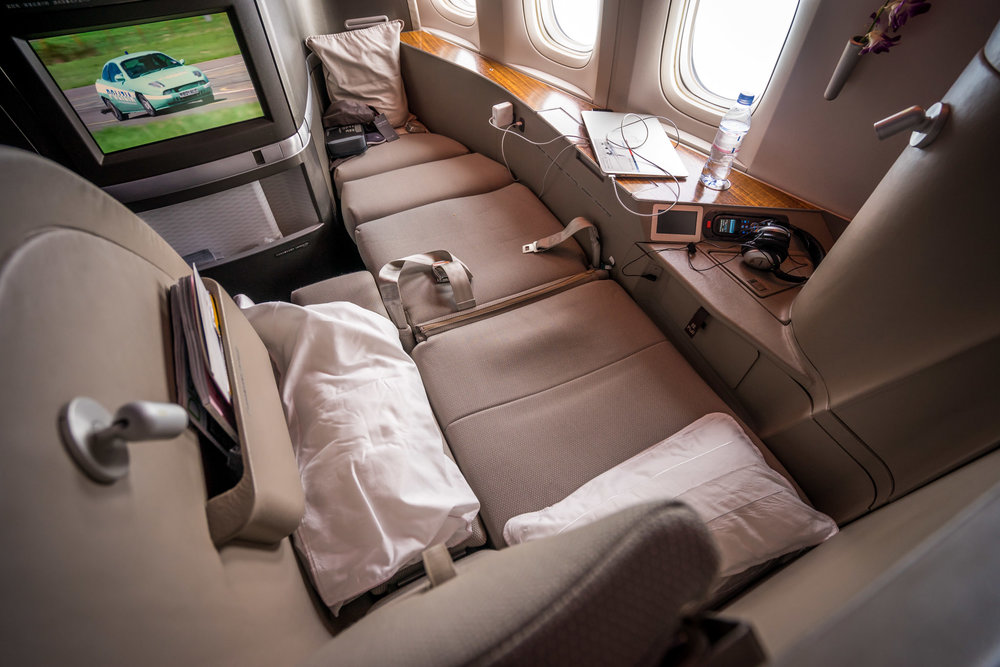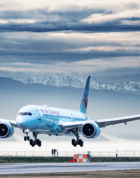The art of earning and redeeming points to travel the world is often likened to a “game”, and that’s often reflected in much of the lingo we use in this community (“two-player mode”, anyone?)
Well, in order to succeed at any game, you need to know what you’re up against. What are the different levels to this game? And how do you “level up” from a novice all the way to an expert?
As someone who’s been playing this game for a good five years or so, I thought it’d be fun to outline what I’d consider to be the various stages of progression as you get better and better at this stuff, hopefully allowing you to identify your current level and providing you with some concrete actionable steps you can take to raise your game even further.
1. Newbie
Newbies have only recently been introduced to the concept of travelling the world on points. Maybe their friend or family member clued them in, or perhaps they overheard someone in the office bragging about their “free” business class round-the-world trip.
Either way, they’re newly aware about the possibilities with Miles & Points, and they’re interested in learning more – but maybe they’re a little skeptical about whether it’s really possible or it’s actually a scam of some sort.
Once they’ve overcome that natural skepticism – perhaps by checking out my Newbie’s Guide to Miles & Points – newbies generally spend most of their time reading and absorbing the basic foundational knowledge within Miles & Points before they actually do anything. Things like the theory behind earning points for cheap and redeeming them for a high value, or how credit scores are calculated, or which rewards programs have the best redemption sweet spots.

Newbies mostly spend their time reading and absorbing information.
In addition to blogs such as this one, active forums such as FlyerTalk are fantastic resources for newbies as they seek to gather enough information to be comfortable getting started. As you absorb all the knowledge you come across, make sure to think about how that knowledge can be tailored to your own specific travel goals, credit strength, and spending capacity!
Common mistake at this level: Diving in headfirst and applying for credit cards without a solid understanding of how things work, such as applying for the Business Platinum Card without having a plan for meeting the minimum spending requirement and ending up failing to earn the bonus points.
Progress to the next level by: Reading and absorbing as much information as you can get your hands on, but more importantly, thinking carefully about how you’d use that information to develop a specific plan of action for yourself.
2. Beginner
Unlike a newbie, a beginner has moved beyond learning the basics through reading material online, and is now actually doing stuff and working towards a goal of some sort.
A beginner will have thought carefully about which trips they’d like to take in the next year or so, and would’ve chosen one of those trips as a goal to focus on. The general workflow here is to figure out the best points programs to use for booking the desired trip, then figure out a strategy for earning the required number of points, then implement that strategy over the course of the next six months to one year. (An illustrated example can be found in my video on “Booking Your First Trip on Points”.)
When I was at this stage, I found it helpful to mentally “check in” every week or so to make sure I was on track for my goal. Had I applied for all the credit cards I needed to? Was I on track to meet the minimum spending requirement, and if not, did I have a plan for how I was going to tackle it? Did I have a clear idea of how to go about booking the trip once I received the points; if not, what were the gaps in my knowledge that I needed to fill?

Beginners are working towards their first points-funded trip.
As a beginner, you find yourself with more questions than answers as you work towards your first points-funded trip. Again, blogs and forums can be a useful resource, since you can often ask your questions in the blog comments or in, say, the Reddit forum’s Daily Questions Threads.
If you’d really like to accelerate your learning process, though, consider coming out to a Miles & Points Event or a local meetup to meet some of your fellow practitioners in-person – that’s the best way to build relationships within the community and find someone to mentor your along the process.
Common mistake at this level: Accumulating points left and right without a clear goal in mind, such as applying for BMO and Scotiabank credit cards when you’re looking to fly business class around the world.
Progress to the next level by: Taking that first points-funded trip and reaping the fruits of your labour for the first time, thus familiarizing with the earning and redeeming process from start to finish!
3. Intermediate
Whereas a beginner was working towards a singular goal, intermediate users are now working towards multiple points-funded trips at once. Airlines allow you to book trips up to one year in advance, so intermediate points collectors are looking for ways to use points to cover as many of their trips within the upcoming year as possible.
At the intermediate level, you’re familiar with the workflow of opening credit cards and meeting the spending requirement. You keep careful tabs on the best credit card offers on the market and make sure you’re maximizing the ones that are suitable to you.
You’re in the habit of applying for new credit cards at a regular pace – I personally was in the habit of applying for 2–3 new cards every quarter – and you’re beginning to dabble with closing cards and reapplying to get the bonus again. Along the way, you strategically maximize your spending habits to meet all the minimum spending requirements that arise, leveraging techniques like using Plastiq to pay your large bills with a credit card.
Depending on their travel goals, intermediate users are also aiming for more aspirational travel experiences, such as the best business class or First Class products out there, or exploring more advanced redemption methods like complex Aeroplan Mini-RTWs.

At the Intermediate level, top-notch business class flights are well within reach.
At this level, the content on blogs and forums starts to read much more intuitively, since you now have some level of experience under your belt. You might therefore feel more comfortable pitching in with your own contributions on the various forums out there. And you also come to the realization that not everything gets discussed publicly online, so you start to “read between the lines” to figure out what else might be out there.
Common mistake at this level: Failing to stay organized as you scale up your credit card applications, and as a result paying unnecessary fees that eat into the rewards you earn.
Progress to the next level by: Focusing on scaling up your earnings beyond simple credit card applications; also, building relationships (online is fine, but ideally in-person) to help you move beyond the blogs and forums as your primary sources of information.
4. Advanced
Advanced Miles & Points practitioners have mastered the credit card game down to a tee. They’ve usually gotten their spouse, family, and friends involved, allowing them to hustle for referrals and also play the game in two- or three-player mode, or even more. Moreover, they’ve also gotten started with US credit cards in order to scale their points-earning operations across geographic borders as well.
At the advanced level, you’re familiar with several tricks that make your life significantly easier than before. You know which credit card issuers have weaknesses in their systems, you know which redemption opportunities are ripe for exploitation, and you know how to knock out minimum spending requirements in one fell swoop.
As a result, advanced folks are living a good life. One or two “big” trips around the world per year, with premium cabins and fancy hotels on the itinerary, are easily within your reach. Feeling like taking a quick last-minute weekend trip somewhere for pennies on the dollar? Boom, done. Got friends and family members wanting a taste of your points-fuelled travels? All they gotta do is ask.

Advanced points collectors can fly First Class on the regular.
You didn’t get here without building a decent network of fellow Miles & Points enthusiasts, and you correspond regularly with your circles to keep each other up-to-date on the latest opportunities. You still browse the forums, but you might find yourself feeling exasperated with the newbies who aren’t on your level, and so contribute less and less. And you read most of the content on Prince of Travel and think, “Pfff, that’s old news.” 😉
Of course, people who are at the advanced level have spent a significant chunk of their time and energy getting there, all because they value the incredible travel possibilities that reward those who make it to this stage.
I like to say that anyone can make it to this point with enough dedication, but not everyone can – because realistically, only so many of you reading this will find it worthwhile enough to prioritize Miles & Points in your life to the extent that’s required.
Common mistake at this level: Missing out on killer opportunities as a result of sheer complacency. I myself was guilty of this back when it was possible to earn Lifetime Platinum status with Marriott through the meetings trick in the pre-merger days – I dawdled on the opportunity, and it passed.
Progress to the next level by: Actively pioneering new opportunities and techniques instead of learning about them from others.
5. Expert
Miles & Points experts are crushing it. Not only are they taking five or more luxurious trips per year to their favourite destinations, but they enjoy the freedom of knowing they can continue to maintain their travel lifestyle for many years to come, thanks to the expertise they’ve developed and their vast network of contacts.

Miles & Points experts have perfected their craft over many years.
Progress to the next level: I honestly don’t know. If I had to place myself somewhere along this spectrum, I’d say I’m at the Expert level, and it would take a level of talent in this game that I simply do not possess to become a…
6. Grandmaster
Grandmasters are so good at this stuff that they’ve achieved an almost mythical status within the community. They earn points on such an epic level that there’s simply no way they could possibly redeem all the points on travel; instead, it becomes an extremely lucrative stream of income on the side.
If you browse through FlyerTalk, you’ll often come across posts referencing individuals (albeit mostly in the US) who manage to earn hundreds of thousands of points.
How did they do it? Most likely, it’s through referrals, and most definitely lots of niche opportunities that you or I have never even come close to hearing about. That’s the nature of the Grandmaster rank, alas: only a select few individuals among all those who play the game will ever have it bestowed upon them!

What I imagine a Grandmaster’s life looks like…
Conclusion
Everyone’s Miles & Points journey will be different, but on the whole, I’d say that the progression from a newbie to an expert that I’ve outlined in this article is pretty uniform. You generally start out by absorbing information, and then getting started with credit card signup bonuses and booking your first few trips on points, before moving onto the more advanced stuff through building a strong network within the community.
Of course, the beauty of Miles & Points is that not everyone has to become an expert in order to derive significant benefits from it – by spending enough time with this stuff, I’d say that anyone can achieve the Intermediate level quite easily, allowing them to stretch their travel budget multiple times farther and take one or two trips around the world per year very comfortably at a steeply discounted cost.
Progressing beyond that, though, would definitely require a level of dedication that not everyone can muster up, or would necessarily want to do so.



















